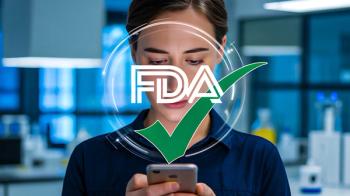
- Volume 0 0
Editor's Note: Efforts Under Way to Document Quality of MTM Services
Documenting the quality of pharmacy services presents an opportunity for the entire profession to demonstrate its value in new and meaningful ways.
Mr. McAllister is a health-systems consultant based in Chapel Hill, NC.
Last month I wrote a commentary on pharmacy's focus on quality and described study results revealing the great opportunities now available for us to help lead quality improvement efforts in the ambulatory care environment. I recently attended a conference of the North Carolina Association of Pharmacists and listened to a presentation by Laura Cranston, executive director of the Pharmacy Quality Alliance (PQA). The PQA is a coalition of many organizations, including most of our profession's membership organizations. Its mission is to promote standardized performance indicators to measure the quality of services provided to outpatients, primarily in ambulatory and community settings.
Cranston presented a compelling argument for PQA's mission, including a quote from Mark McClellan, MD, PhD, former Centers for Medicare & Medicaid Services administrator. He appropriately recognized that if pharmacy wants to be compensated for its medication therapy management (MTM) services, a systemized way to deliver MTM services—and clearly demonstrate the results—is essential.
New Quality Measures Needed
Performance measures in retail settings (and earlier, in hospital settings) traditionally have focused on statistics, such as prescriptions filled per pharmacist shift, generic conversion rates, and customer satisfaction, which is convenience-oriented. Instead, we should consider measuring patient medication adherence, as well as the value patients receive from counseling services. We also need to assess whether patients are achieving pharmacotherapeutic goals as defined and supported by evidencebased medicine.
This expectation for documenting the quality of pharmacy services presents an opportunity for the entire profession to elevate its societal mission and publicly demonstrate its value in new and meaningful ways. Meeting this challenge, however, requires a widespread commitment on the part of all of us, regardless of our practice setting. Health-system pharmacists have been compelled to document and demonstrate quality improvement initiatives, not only by their organizations, but by accreditation agencies, and, more recently, by public and private payers. We have plenty of room to improve, but we also should offer assistance locally to our ambulatory pharmacy colleagues, as they develop strategies to demonstrate and document the quality of the services they provide. We can be helpful in reassuring them of the positive aspects of quality measurement, as well.
Collaboration and Outreach
The PQA represents a collaboration of 60-plus stakeholders who have embarked on a deliberate, methodical, and consensus-based process to develop reliable quality measures—an effort that should reflect positively on our capabilities and value. As part of this process, beginning in 2008, the alliance intends to launch demonstration projects designed to validate its efforts to develop effective and meaningful measurement tools. PQA is guided by a steering committee representing 15 organizations. In her role as executive director, Cranston, a committed pharmacist herself, is coordinating these efforts, which can have a very positive impact on our profession.
The effort may meet with resistance from within the profession, and it will require work with boards of pharmacy, professional associations, payers, and others. Finally, and most importantly, we must be diligent to ensure that this important initiative is understood and valued by the patients we serve. I encourage you to visit the PQA Web site (
Articles in this issue
almost 18 years ago
pharmacy Pet Peevesalmost 18 years ago
can you READ these Rxs?almost 18 years ago
Case Studiesalmost 18 years ago
ASTHMA WATCHalmost 18 years ago
DIABETES WATCHalmost 18 years ago
WOMEN'S HEALTH WATCHalmost 18 years ago
CHOLESTEROL WATCHalmost 18 years ago
compounding HOTLINEalmost 18 years ago
pharmacy TECHNOLOGY productsalmost 18 years ago
pharmacy TECHNOLOGY newsNewsletter
Stay informed on drug updates, treatment guidelines, and pharmacy practice trends—subscribe to Pharmacy Times for weekly clinical insights.


















































































































































































































